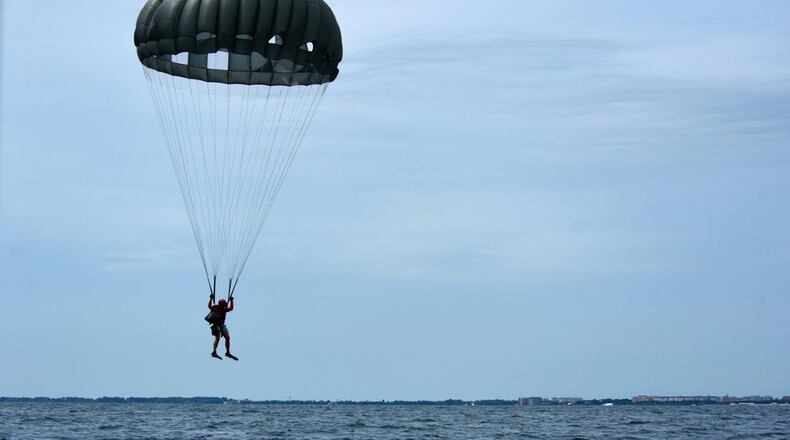This year’s senior capstone design project is to perform in-depth research, consultation and exploration to engineer, design and build a prototype system to locate personnel and assist in survival during water rescue and recovery missions in contested, hostile environments.
Pilots often fly long distances, over barren terrain and water. These aviators usually deploy with electronic aids, such as radio and locator beacons, but typically do not have visual navigation aids if they are forced to eject from their aircraft.
Following ejection, the pilot follows specific training guidelines to ensure survival and recovery. Efforts are made to locate, communicate and recover downed aircrew members and isolated personnel.
In this challenge, teams are required to meet and interview at least five subject matter experts from varying departments, groups, or areas involved in rescue and recovery. Additionally, photographs and concept drawings of the rescue experiments are required.
“We are looking for new ideas and innovative methods to safely, effectively and expeditiously search and rescue downed pilots in water rescue and recovery situations,” said Bryan Sanbongi, senior materials research engineer in AFRL’s Materials and Manufacturing Directorate.
“We partner with the best schools in the nation to provide relevant ideas and concepts that are fabricated into working prototypes and then demonstrated as a final exam,” said Mike Lazalier, program manager for the SAC/UDC. “It is exciting to work with students of this caliber that are new to problems and haven’t been discouraged from a certain solution set. Ingenious ideas are developed that impress the judging team comprised of experienced operators and engineers.”
The final demonstration includes three phases: first, present a thorough and in-depth presentation to the judges and subject matter experts. This briefing contains research, reasoning and engineering. Second, deploy the prototypes in a water survival environment and assist in CSAR crews (airborne and surface vessels) locating, communicating with, and recovering the survivor. Third, select prototypes with a probability of success in real-world scenarios.
Finally, a video of the device during testing is required in the briefing to the judges. The final design must be operational and undergo at least one test before attending the event.
Scoring the locator device is based on size, weight, performance, ease of operation, reusability, innovation, creativity, engineering, research, subject matter expert interviews, participation, presentation and judge’s comments.
AFRL-sponsored challenges provide a low-cost conduit to develop innovative solutions while tapping into energetic and bright ideas of college seniors, their mentors and university staff.
Several novel ideas and innovative solutions from past challenges have moved from prototype development to limited test and production. Solutions are sent to industry and specialized military forces for further development or study. Often, CRI takes pieces and parts of several prototypes to present to customers for future development consideration.
AFRL, assisted by Rally Point Management, is hosting the 2020 challenge, forecast to be held in April 2020 near Eglin Air Force Base, Florida.
“This is the eighth year that Rally Point Management has participated and the third year they have hosted the challenge,” said Mickey Wright, retired combat controller and company lead for Technology and Battlefield Innovation. “We are excited to work with the schools and hopefully field a product to our warriors on the battlefield.”
For more information, contact Wright at wrightm@rpm.llc, Rally Point Management.
The Air Force Research Laboratory is the primary scientific research and development center for the Air Force. AFRL plays an integral role in leading the discovery, development, and integration of affordable warfighting technologies for our air, space, and cyberspace force. With a workforce of more than 11,000 across nine technology areas and 40 other operations across the globe, AFRL provides a diverse portfolio of science and technology ranging from fundamental to advanced research and technology development. For more information, visit www.afresearchlab.com.
About the Author
